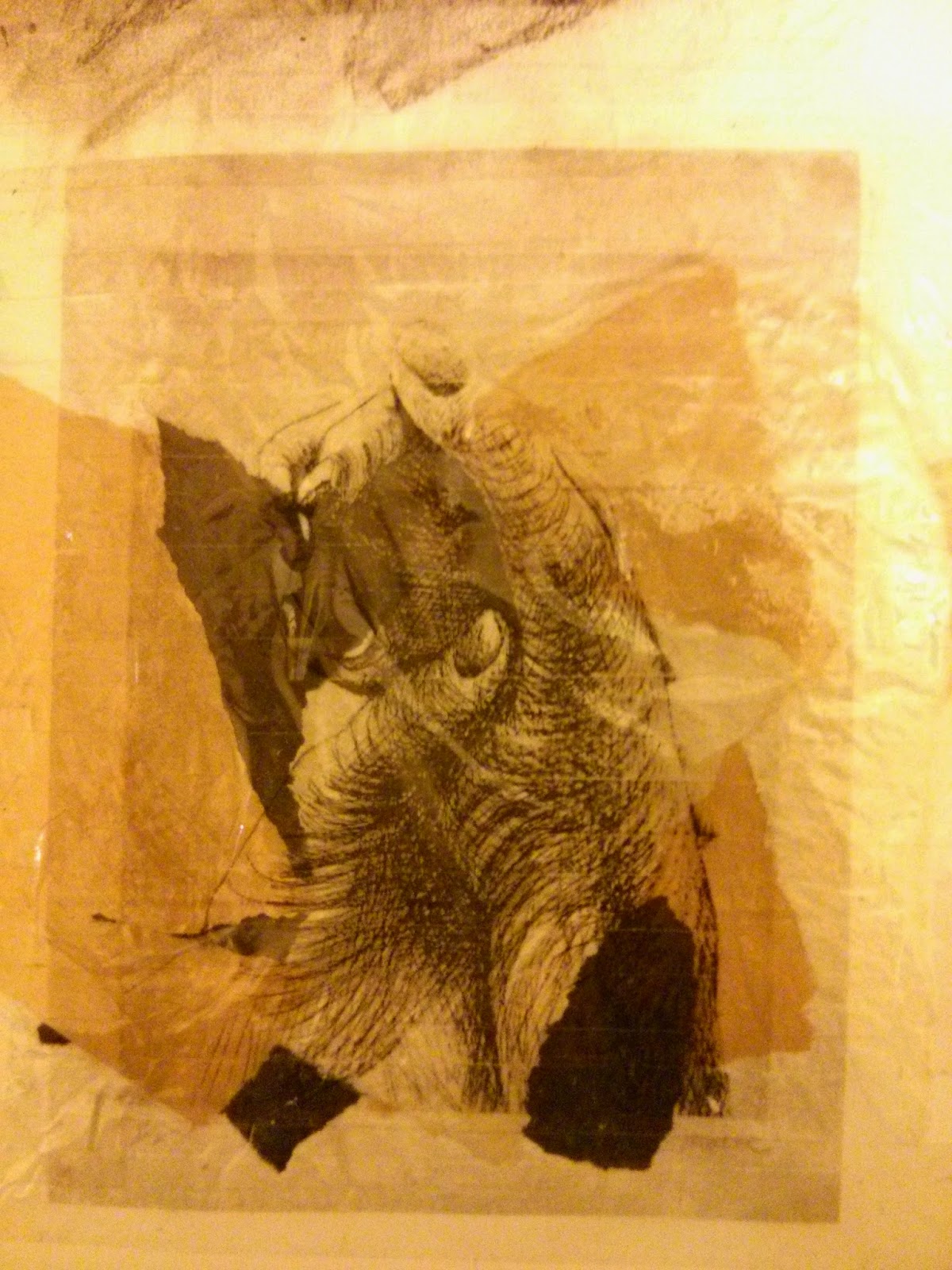Andy Goldsworthy
Using this piece by Andy Goldsworthy, I decided to use a transfer technique that we were shown in class to further represent the idea of 'layers'. After printing out the picture in black and white, I stuck sellotape over the image so that it was completely covered:
After doing this I soaked the image in water, then began to strip away the layer of paper with a sponge:
As you can see in the images above, the ink has been transferred to the sellotape, and where the areas were white in the original image, it has become transparent.
After cutting put a hole in my sketchbook, I stuck the transferred piece in the middle so that you can see through it, almost like a window. Around this I painted the background with acrylic paint and then used paper from another transfer technique that give the look of falling leaves.
Using Henry Moore's 'The Artist's Hands IV' (1979), I did another transfer onto sellotape and stuck it into my sketchbook after smudging some charcoal underneath. I think that this works well because it brings a further depth to the image rather than having a plain white background.
Using the same image, I did a collage of different coloured and textured paper underneath which brings some colour to the image as well as adding some tone to the actual drawing.
Overall, I think that both of these transfer techniques work well because they both give the original drawings a different perspective and outlook, giving different layers of tone and shape, allowing space for experimentation.









No comments:
Post a Comment